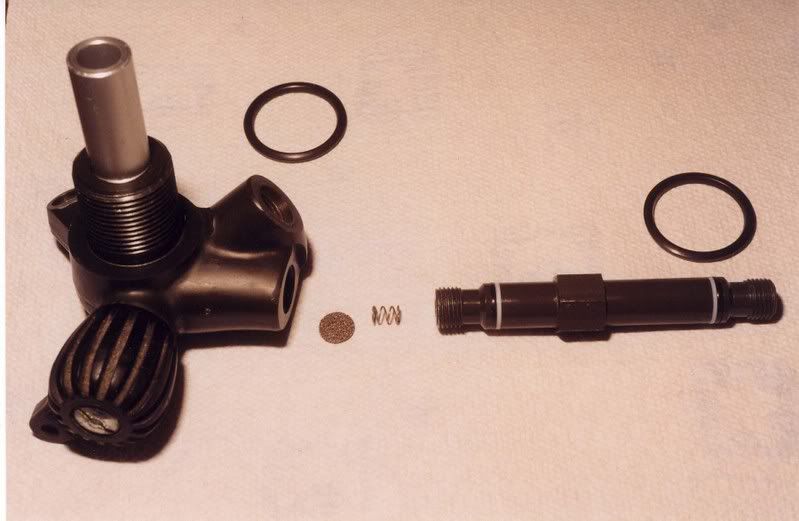Gilldiver:
He used tripple 30's that had a three part US Divers manifold in the yellow fiberglass back pack. The manifold was a total PITA to assemble and get all the connections not to leak as they were brass on brass compression fittings. Much like the Sherwood manifolds on many old twin 72's sets. You had to get a "Big" wrench to tighten the caps down.
The yellow backpack was developed to be better looking for his films.
The MK 15 rebreather uses a sphear for O2 and dilutant. It is one of the problems with getting a MK15 or MK15.5, the sphears are almost imposable to replace.
Actually, the UDS-1 is a set of triple 35 cubic foot tanks, for a total of 105 ft3. They are AL 3000 psi cylinders, with a much larger, one-inch diameter cylinder opening. The valve is made of aluminum, to be compatible with the cylinders. The valve has huge openings into the cylinder:
The problems with servicing this unit has to do with mating the cylinders to the shell, and it typically takes me about an hour to do mine (but I'm getting better at it).
In the water, once you know how to balance the unit and how to modify the harness, it is a dream. It needs about 6 pounds of weight on the top of the unit, or it will float away from the diver's back and become a real drag in the water. The harness is a cross between the European system, which uses no waist strap, and the American system, which has a waist strap. Because of this, the waist strap is way too low to work, and should be removed. The unit comes with a crotch strap and a European-style buckle which has a notch for the retainer on the crotch strap. This buckle should be put onto your weight belt, and then use only the crotch strap (no waist strap) for the unit.
There were some engineering problems, particularly with the filler hose and the valve in it which allowed for filling. I have overcome these too.
Once this is done, the unit works extremely well in the water. Because of the huge openings, it can be breathed to "zero" indicated psi on the SPG, and no resistance will be felt. You will finally feel resistance with about five breaths left in the unit. It has a J-reserve and a SPG, so no one should run out of air.
I was in the Clackamas River today with my UDS-1, and really enjoyed using it, especially in the current. It rides well, and is very streamlined.
SeaRat






